Legendary Film and Television Director Bob Giraldi: “5 Things I Wish Someone Told Me When I First Started”
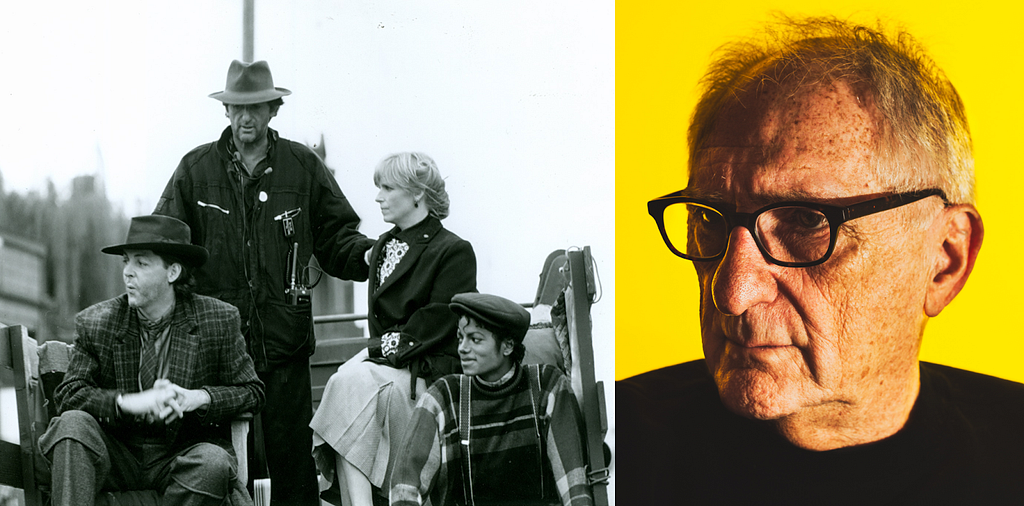
Don’t ever yell at the actors — It’s obvious — the heart and soul of any director’s work — especially work like I usually do — is totally dependent on believable and emotional performances from the actors hired — and the more I make them suffer, the more the chances are I’m the one who ends up really suffering
I had the pleasure to talk to Bob Giraldi. Bob is a prolific American film and television director renowned for his versatility spanning multiple industries. Born in Paterson, New Jersey, Giraldi graduated with a Bachelor of Fine Arts degree from Pratt Institute in Brooklyn in 1960. His career trajectory led him from being a graphic designer at General Motors to an influential role in the advertising sphere at agencies like Campbell-Ewald in Detroit and Young & Rubicam and Della Femina & Partners in NYC.
Notably, Giraldi shifted from advertising to form Giraldi Productions in 1970, which has since birthed nearly 5,000 commercials, music videos, and short films. Among his iconic contributions to the music industry are videos like Michael Jackson’s “Beat It” and “Say, Say, Say,” a collaboration between Jackson and Paul McCartney. He also directed acclaimed videos for artists like Pat Benatar, Lionel Richie, Will Smith, Dianna Ross, Stevie Wonder, Hall and Oates, Earth Wind and Fire, Ricky Martin, and many more.
In the realm of film, Giraldi’s credits also include “Dinner Rush” starring Danny Aiello, John Corbett, Sandra Bernhard & Summer Phoenix. This film not only garnered critical acclaim. Influencing a few of the episodic “restaurant shows” that soon followed, and at a time, was required viewing @ the CIA (Culinary Institute of America) — but also had a personal touch as it was filmed at Gigino Trattoria in Tribeca, which Giraldi owns. Throughout his career, Giraldi has ventured into various projects, including owning several distinguished New York City restaurants, and his contributions to the culinary world don’t end there. He co-owned Jean-Georges Vongerichten’s first eight restaurants– as well as being the co-creator of StarChefs.com, a website dedicated to showcasing celebrity chefs and cookbook authors, and still going strong today.
Beyond his tangible projects, Giraldi has received numerous accolades, with several London International Awards, Cannes Advertising Awards, NY International Awards, Addy Awards, and dozens of Clio Awards to his name. He’s been inducted into the Art Director’s Hall of Fame and was the first commercial director to be inducted into the Advertising Hall of Fame. His illustrious career and influence in both film and culinary arts make him a force to be reckoned with in the creative industry.
Thank you so much for joining us in this interview series! Our readers would love to get to know you a bit better. Can you tell us a bit of the ‘backstory’ of how you grew up?
Sure thing, Yitzi. I grew up in Paterson, a rough-edged city in northern New Jersey, in a middle-class neighborhood that was a true melting pot of the era. The streets were a blend of working-class Italian, Irish, German, Polish, and Russian families– and in our diverse community, there was an upscale area near Eastside Park mostly inhabited by Jewish families, and closer to downtown, a section where black and Latino families resided. This cultural mosaic was a beautiful part of my upbringing, and I had friends from all walks of life.
Raised in a household that cherished both numbers and colors, my father was a hard-working accountant while my mother was a gifted artist, proficient on both the canvas and the stovetop. As a child of the rock n’ roll & doo-wop era, my days were filled with the anticipation for my driver’s license, sports, and camaraderie. Yet, the artist’s spark in me was kindled early on — especially in drawing. Minnie, my mother, recognizing this talent, insisted I attend a drawing and painting class once a week. Although initially compelled, this routine soon morphed into a way of life, nurturing a passion that certainly defined the contrasts of my adolescence.
When the time came for college applications, my heart was set on several reputable art schools in the vicinity — Cooper Union, the New School, and Parsons– even RISD (Rhode Island School of Design) in Providence. However, rejection letters from all of them created a sort of panic. However, fate had a different path in store when I was offered an athletic scholarship to Wagner College in Staten Island. I was elated, but then, life threw an unexpected curveball my way.
The Athletic Director at Wagner College, upon reviewing my aptitude and entrance tests, noticed my abilities in art. He believed it would be an injustice for me not to pursue a path in art. As luck would have it, he had a brother initiating his career as a recruiter at Pratt Institute in Brooklyn, who was on the lookout for athletes with a knack for art, architecture or engineering. With a mixture of fate and a dash of luck, I was introduced to this opportunity that seemed to marry both my athletic and artistic inclinations.
The idea of Pratt Institute — a revered sanctuary for art, architecture, and engineering — welcoming athletes was beyond my imagination. Yet, they believed a few athletically inclined individuals could add a unique flavor to their esteemed halls. The notion was unconventional, yet enticing, so I decided to embrace this unique challenge, and to my delight, Pratt welcomed me with open arms. This unexpected twist embarked me on a collegiate journey where the artist and the athlete in me found a harmonious playground. This was the juncture where my voyage, leading to an intertwined path of creativity and athleticism, was, as they say, just the beginning of an extraordinary narrative.
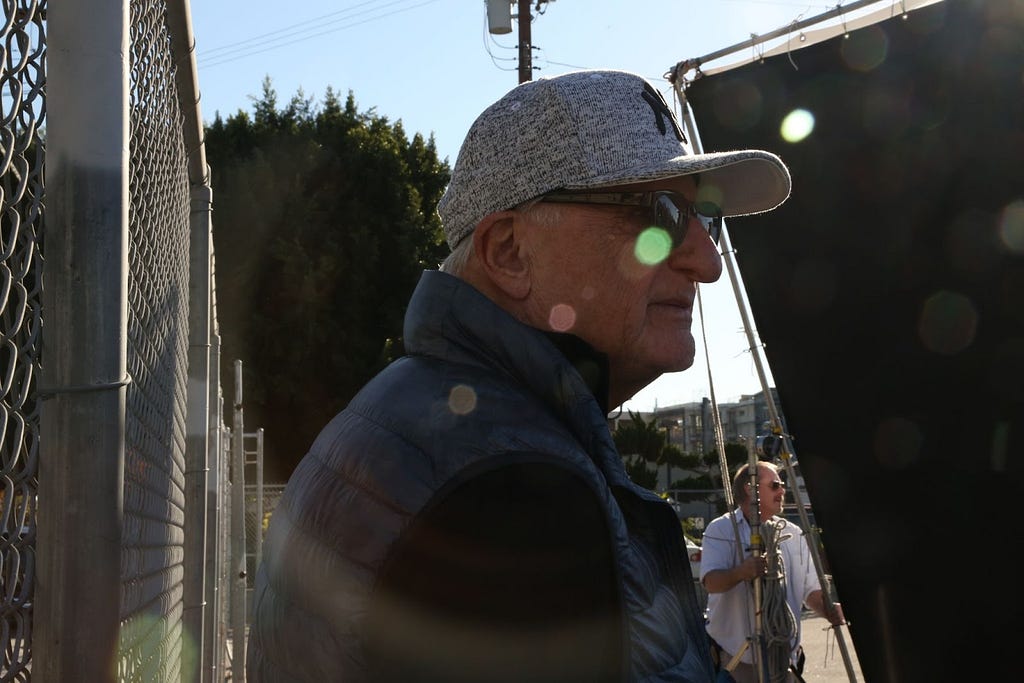
Can you share a story with us about what brought you to this specific career path?
After graduating from Pratt Institute in the early 60s, my journey kicked off in Detroit, Michigan, where I landed a job as a young designer at the newly minted General Motors Tech Center– an architectural marvel that was the creation of Eero Saarinen, among the top notable names in the realms of industrial design and architecture during that era. The job, however, didn’t involve designing the sleek lines of automobiles, but rather crafting brochures and marketing materials. Though the job wasn’t exactly a thrill, Detroit’s inner city had a charm of its own that captured my heart, especially the Tigers and the budding Motown scene. Among the memories that stand out is a night where I found myself in a dingy club, spellbound by Bobby Darin’s rendition of “Mack the Knife.”
The pull of the Big Apple proved strong, and I soon found myself back in New York, embracing an opportunity that knocked at my door from the mega-sized advertising agency, Young & Rubicam. As a junior art director, I plunged into the swirling currents of Madison Avenue’s print and television advertising world, navigating through nine years of evolving genres and the inherent politics. Although the phrase ‘creating by committee’ often echoed through the halls, it was a playground where I honed my craft, garnered awards, and began to crystallize a vision of where my creative pursuits were leading.
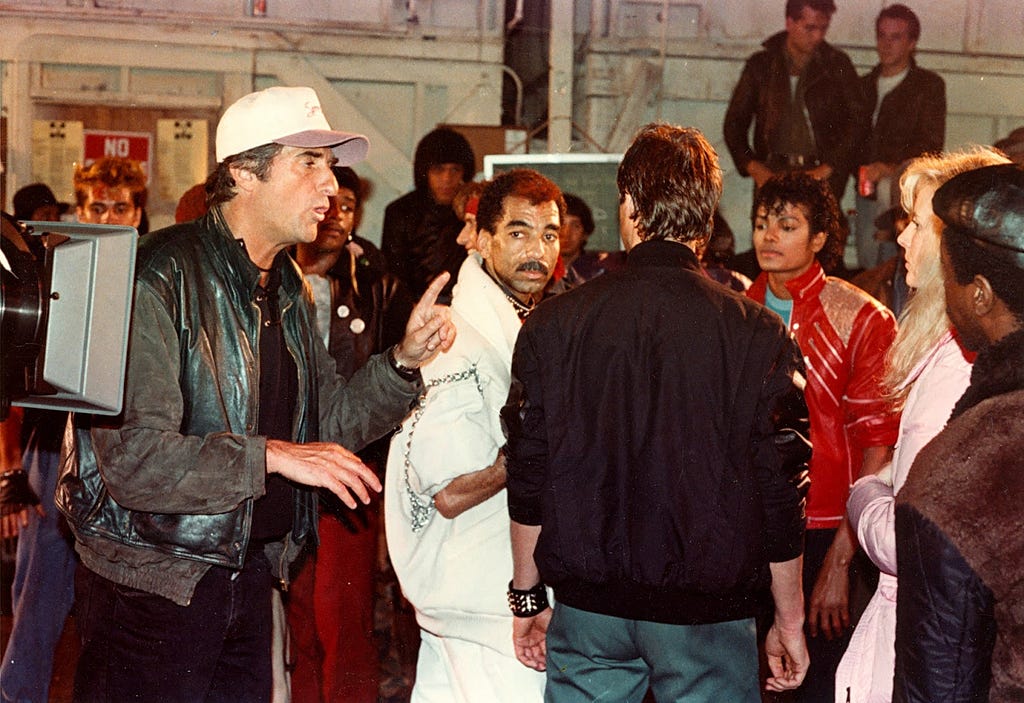
Yitzi: Can you recall your first big break, your first significant break? Could you share the story of what led up to it and what happened afterward?
My career took a slight detour as I joined another advertising agency, led by the phenomenal writer and persona, Jerry DellaFemina. Unlike before, this chapter was marked by a liberating autonomy to create, to err, and to learn, with each mistake being a reflection of my creative ideology, not a client’s whims.
As fate would have it, an ambitious TV production salesman saw ‘a director in me, waiting to be unveiled.’ His persistent nudges and a well-argued case convinced me to transition from creating ideas on paper to directing them on screen. I was hesitant, but I took the leap, bidding adieu to DellaFemina’s place, and embraced the director’s chair. The initial days were tough, with a year passing by without any notable work, just a notebook filled with doodles and a string of unanswered calls– yet, patience bore fruit when comedian Dom Deluise and a project from my former agency, DellaFemina, knocked on my door.
It was a commercial for OXYDOL, then a leading washing detergent– but it was something, and it actually turned out to be the most I’ve ever laughed on a film set — DeLuise was hilarious– constantly. Then, unexpectedly I was handed the reins to direct a commercial for Vitalis, starring the enigmatic Victoria Medlin who is hanging out in the Miami Dolphins’ locker room after a game and pats quarterback Bob Greise on the ass; “Nice game, Bob”. The commercial caught fire, propelling me into a different spotlight almost overnight. Calls started coming in and it was a surreal transition from the silence of the previous year. This project wasn’t merely a commercial; it was my break, the springboard that catapulted me into a career path– the beat, as they say, kept going on, leading me to a path full with creative explorations and the joy of seeing them come to life on screen.
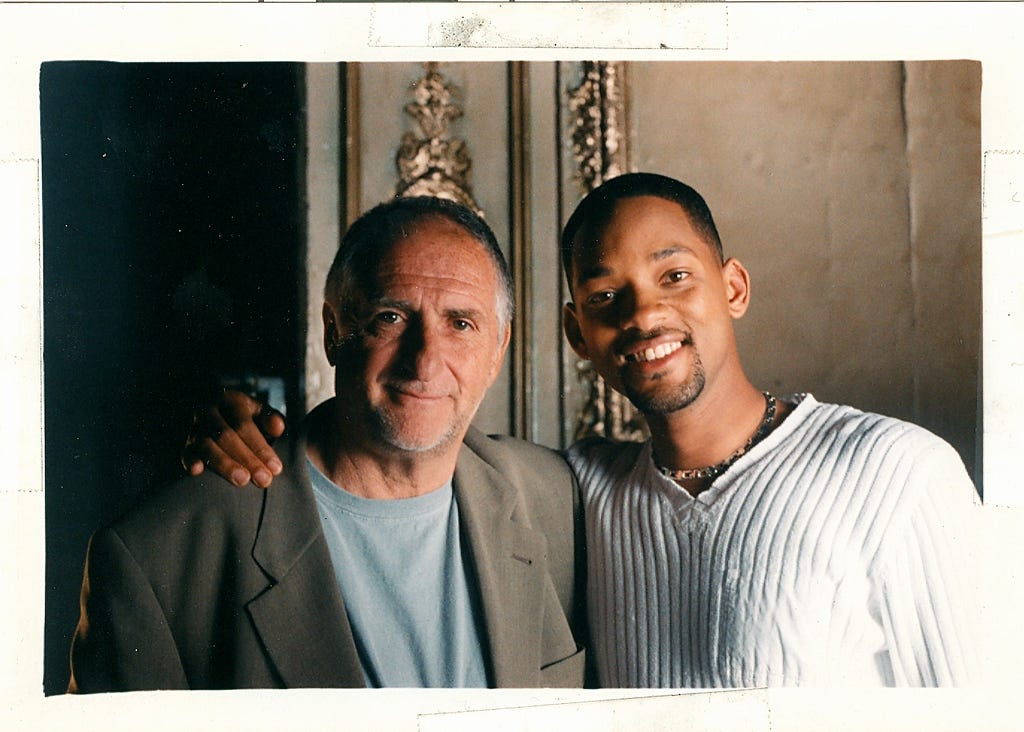
Can you share the funniest or most interesting story that occurred to you in the course of your filmmaking career?
Bob: Yeah, sure. Obviously I’ve got plenty of memories from those days– but I’ll give you one that was pretty emotional for me;
It was when Michael Jackson and I were negotiating over me directing “Beat It.” We had no prior relationship– I was just a guy who made commercials and he was the genius who made music. It seemed every director interested in “music videos”, the latest pop-art phenomenon, wanted to do “Billie Jean,” but it had already been filmed in Europe. I was disappointed, but eventually we sat down and discussed the second track from his new album, “Thriller” called “Beat It” — and it was the commercial from a few years earlier that finally convinced him I might be the right partner for what was soon to become one of his most famous “signature songs.” After he saw it he gave me “the green light” to film my very first music video.
The commercial was one for WLS TV in Chicago. It was a simple, truthful life-style story about an elderly white couple who were the only ones not to flee their neighborhood when most of the homes were sold or rented to minorities. Instead, they held a BLOCK PARTY for all the kids in the neighborhood and I was to reenact it. The couple were in their 80s…and both were blind — yet, they managed to set up a long table in the middle of the street with balloons, confetti, candy, home-made food and gifts — and spread the word that they were giving a party.
I recruited loads of local young children and we set up on a street outside of Chicago and — at one point during the filming I chose to operate the camera myself — my normal style is to hire a talented Director of Photography who will film most of the material while I direct and stage — but this was one scene I wanted to actually get behind the camera for– the blind couple struggling , but carefully serving and interacting, touching, some of the kids they never me before. So, I did — and for the first time in my life I started to cry while filming. Couldn’t hold it in. The performances by the actors were so real and the action was so close to the truth that I couldn’t continue without ruining the takes. I’ve never forgotten the feeling after yelling “CUT!” in the middle of a take — and getting off the moving dolly and walking away, trying to hold it together.
And– I guess something touched The King of Pop as well.
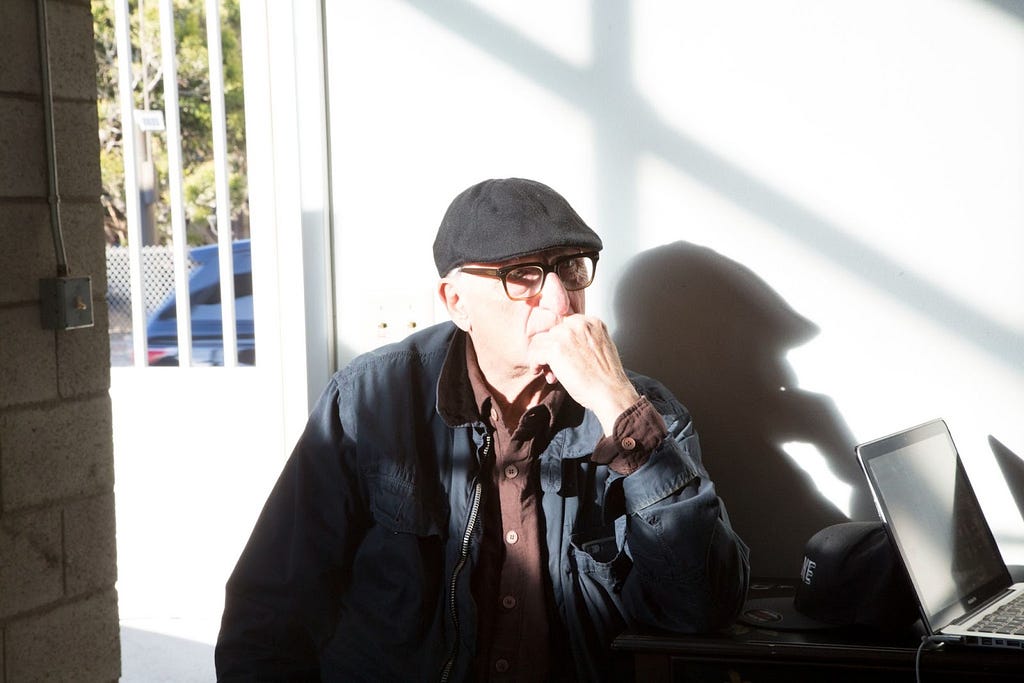
Yitzi: Can you share another story from behind the scenes of making “Beat it”?
Here’s the story about Michael Jackson insisting we use the real Crips and Bloods in the video. These guys were no joke; you know, two of LA’s most notorious gangs– but Michael wanted to incorporate them into the video and when Michael wanted something, he usually got it. I was concerned but he insisted. Michael somehow made contact with them and became the Casting Director, picking a few from the real gangs. We cast the dancers and the key roles. Most of the first day filming we managed on set, and kept everyone away from any trouble– but, then; things got a bit tense, and when there was a scuffle among two of them, the head cop pulled me aside to inform me it wasn’t wise to continue since they were the real deal, and if anything happened to anyone, especially Michael, he’d be in a helluva lotta trouble.
So, I decided on the spot to change the plan; I asked the sergeant if he would agree to letting me try something that I hadn’t planned on shooting the first night– to dance. He agreed, reluctantly. So, I grabbed the Assistant Director and the chaos started. We got the sound guy to play the music, and play it loud– knowing the neighborhood would ultimately complain and call the precinct. We got all the dancers ready to dance; something they weren’t expecting to do until the next evening– but you can never believe a film schedule. As soon as the music for “Beat It” started, and the dancers got going, and the beat pulsed, and Van Halen’s guitar blasted –the entire crew, everyone on set, including the cops, gathered around. I watched a total transformation of a hungry, anxious, tired and pissed cast & crew turn into the most turned-on audience anyone could’ve imagined– and when Michael came down those boxes and started dancing surrounded by some of the best street dancers LA has ever produced the place went berserk. That iconic moonwalk with choreographers Vince Patterson and Michael Peters dancing alongside him– Michael’s incredible and iconic talent shone brighter, kept the peace and brought the joy– and, don’t be fooled, most directors don’t admit it but know when they ‘have something’ — and I knew instantly we had created something special. And so did everyone else on that set.
But the thing that is etched in my mind forever is the Crips and Bloods, hypnotized, almost paralyzed, but certainly humbled, standing on the sidelines, watching in awe as these dancers performed moves they could only dream of doing themselves. I know some of what was going through their minds; “I may be the baddest ass in town, but I could never do that!”
It was a magical moment. And the highlight of my first night ever on a music video set.
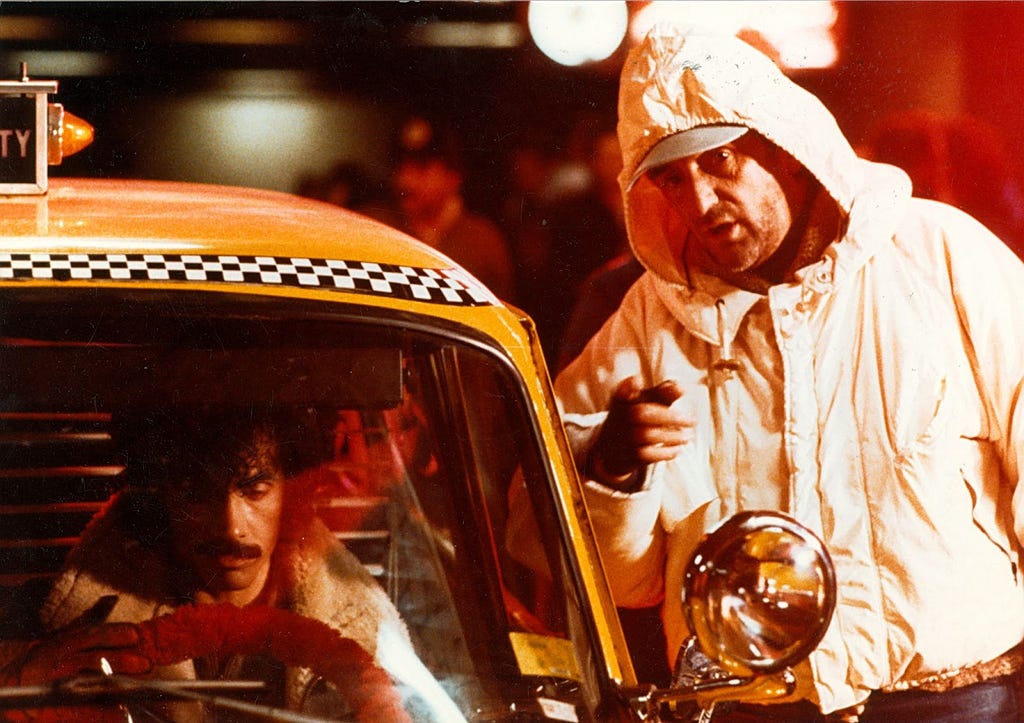
Yitzi: Wow, those are incredible stories, Bob. It must have been quite an experience.
Bob: It sure was. And here’s one more for you. Let’s fast forward to 1985, the night of the American Music Awards when “We Are the World” was recorded. Ken Kragen, Lionel Richie’s agent, was urged by the great artist and activist, Harry Belafonte, to gather the best of America’s music talent and do something for Africa. So, there they were, right after the American Music Awards show– the one embedded in TV history when Michael did his ‘moonwalk on stage’ — walking into a recording studio on Beverly Boulevard, a star-studded lineup that included Micahel Jackson, Lionel Richie, Paul Simon, Bob Dylan, Ray Charles, Bruce Springsteen, Diana Ross, Dionne Warwick, Cyndi Lauper, Kenny Rogers, Stevie Wonder, Hall & Oates and many more.
And– I was fortunate enough to be one of the few invited into the booth with Quincy Jones, who was producing it.
All night long, Quincy kept, take after take, recording the chorus– and then, the individual solos that were the highlight of the track– until, almost at the end, he motioned for one individual to take the mic– it was his turn. Clad in a dark raincoat, I’ll never forget the moment Steve Perry, lead vocalist from Journey stepped up to the microphone and hit a note that left everyone in awe. “Woah! Let’s hear that again!” — Again and again, take after take, Perry “killed it with his unique and powerful– and, emotional voice. It was an unexpected moment, and it earned Steve the respect of some of the biggest names in the music industry.
The room was filled with magic that night, with legends like Ray Charles commanding the ultimate respect. It was a truly unforgettable experience.
Yitzi: That sounds like an incredible night, Bob. Thank you for sharing these stories and giving us a glimpse into those iconic moments in music history.
Bob: You’re welcome, Yitzi. Those memories are still dear to my heart, and I’m glad I could share them with you. Music has that unique way of bringing people together and creating moments that last a lifetime.

Yitzi: It’s hard to imagine gathering the biggest acts in one room. Feels like it’s impossible today, right?
Bob: Yeah, it wouldn’t work as easily today. It’d be like, I’m on my solo journey; I don’t roll with that guy anymore. But back then, it was something new. You can’t forget that there was only one other event like it in England before ours.
But it’s about the people I was fortunate to work with. When you talk about stars, you should know that many of the people who influenced me were folks I’ve never even met. I’m talking about writing and directing legends like Robert Rossen, Sidney Lumet, and especially Elia Kazan. Kazan directed classics like “On the Waterfront” and “A Streetcar Named Desire” — Rossen did “The Hustler” and I’ll never forget Lumet’s “12 Angry Men.” These were the talents who made movies a long time ago that delved into real-life issues and human problems.
Filmstars like Paul Newman, Jackie Gleason, Montgomery Clift, Elizabeth Taylor, Rock Hudson, Marlon Brando, Katharine Hepburn, and Spencer Tracy — they all moved me deeply. Their performances made me laugh and cry– but mostly, made me think, made me envious– and made me work harder.
Then there were people I had personal relationships with; like Steve Frankfurt from Young Rubicam, who was the president and head of the creative department. Steve had the patience to deal with my insecurities and put up with my nonsense– but it was his uncanny ability to see things tastefully and dramatically that had the most influence on me. Silas Rhodes, who founded the School of Visual Arts, gave me the chance to teach, something I still do today. And have you heard of George Lois, the art director? He was the real deal, the inspiration for Don Draper in “Mad Men” — probably the most famous art director in advertising history, and he didn’t mince words with clients. He’d tell them straight up if their ideas were nonsense. We all tried to follow his lead, but no one ever came close to the intensity and talents of the art director and designer, the late George Lois.
I’ve been influenced by a whole bunch of people, but none like my partner Patti Greaney. You might not know her, but she created Star Chefs, the first-ever chef and cookbook author website. Back in 1995 when the general public was just learning about the internet, she saw the future and she compiled a comprehensive guide to the culinary scene, straight from the mouths of the chefs themselves. That was groundbreaking, especially when info was hard to come by.
What’s amazing about her is her visionary outlook. Not many people have that kind of foresight, but she does. Living with someone who has that vision, drive, and the determination to push me forward has been invaluable. I’ll never forget what Patti used to say as a line producer — “You never take no for an answer.” And in today’s world, especially, that’s the only way to produce anything. No way I survive without Patti at my side.
So, I’ve been influenced by a lot of incredibly smart people.
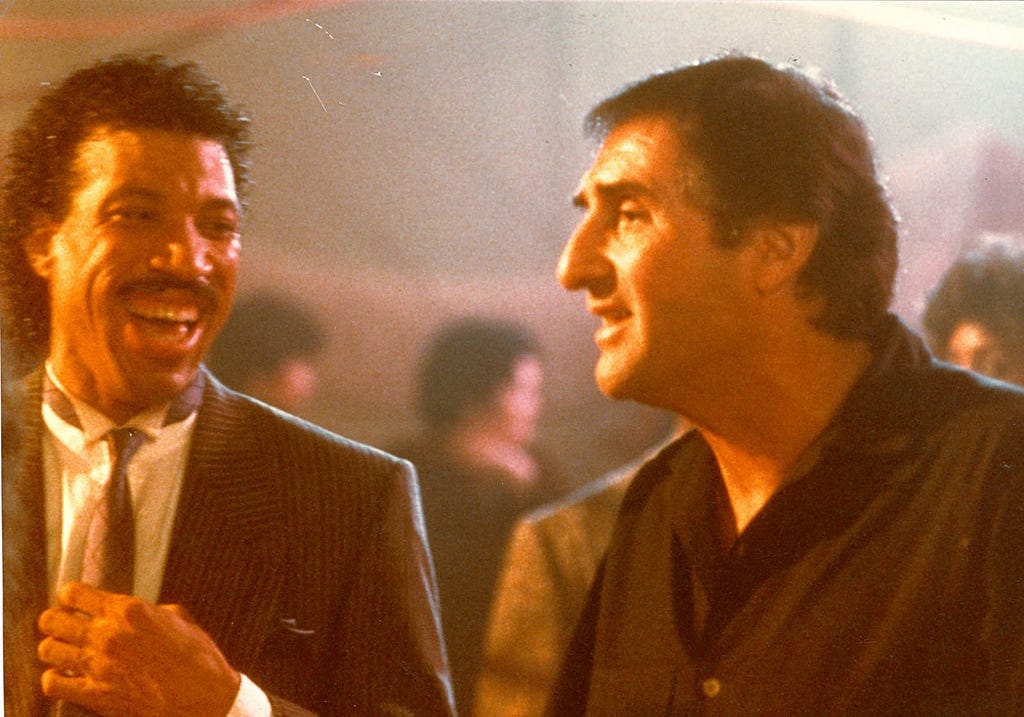
Who are some of the most interesting people you have interacted with? What was that like? Do you have any stories?
There are stories. And — there are a few personalities that will always stand out, have a special place in my heart; Lionel Richie, for one — a very real, honest, super-talented and caring human being who I spent a lot of professional and personal time with — I’m delighted for his continued success. I’ll never forget when he pulled me aside on set one day and said, “It’s getting tougher and tougher to write love songs from the backseat of a limo, man.”
There’s Bob Uecker, the very funny actor/Milwaukee Brewer baseball announcer who I laughed a lot with when directing the eternal Light Beer from Miller long-running tv campaign. In my mind he’s still one of the most underrated stand-up comedians ever!
Every year there would be a “dinner party” set up for all the athletes and personalities connected to the filming of the Lite Beer campaign — and, naturally we would be eventually entertained by the resident stand-up comic from the cast, Rodney Dangerfield — but one time, Rodney was followed on stage, unexpectedly, by Ueker — who stood up there and in his inimitable style, had the funniest routine ever. The audience roared with laughter — and Rodney never hung with the cast from that day on — stayed in his camper constantly, until called to the set. Gotta feel for insecurity.
There’s the cast of DINNER RUSH, Danny Aiello, John Corbett, Sandra Bernhard, and a shout-out to Summer Phoenix, sister of Joaquin, — who I had a wonderful experience directing in the feature we did together; a portrait of life in the restaurant business in lower Manhattan that we filmed entirely in the place I own in Tribeca, NY, called Gigino Trattoria. Summer is an actor I would love to work with once more — spirited and glib — always prepared — no monkey business…directors love that style.
And speaking of the food world, I spent quality time with Marcus Samuelsson — celebrity chef and actor who is just as cool, talented and active in all things that matter as anyone. And, as a first-time author, I think his novel, “Yes, Chef” is as accurate a portrayal of the strange, but unique, restaurant “back of the house” culture as any.
I’ll always remember fondly Denzel Washington when we worked together a few times as he was crafting and experiencing the beginning of his incredible and indelible Hollywood career — another totally professional actor starting out — I recall everyone on set would bet that one day he was destined to become a major star.
A writer I adored and loved to grab a meal with and go on about local stuff, politics and sports was the legendary Pete Hamill– one of NY’s greats! I loved Pete’s mind and humor– even if he did “get the girl” as we competed when we both attended Pratt Institute a million years ago. I lost.
— and, of course, there is only one Joe DiMaggio — beloved by New Yorkers and a legend well before we met and worked together. Later on, lunch with Joe when he was in NY were moments of candor and honesty as he was in his later years and loved to talk about his life. But he never mentioned one of the most important and least understood parts of it. Moments I will never forget.
And, Paul McCartney — who I had an energetic, creative and fun time with — loved his talent, legacy — and life-style. Who else but Paul, wanting to have an urgent meeting about an upcoming project, would send tickets to me and my producer to get on the Concord to London immediately —
Each personality has a story — hard to pick one…
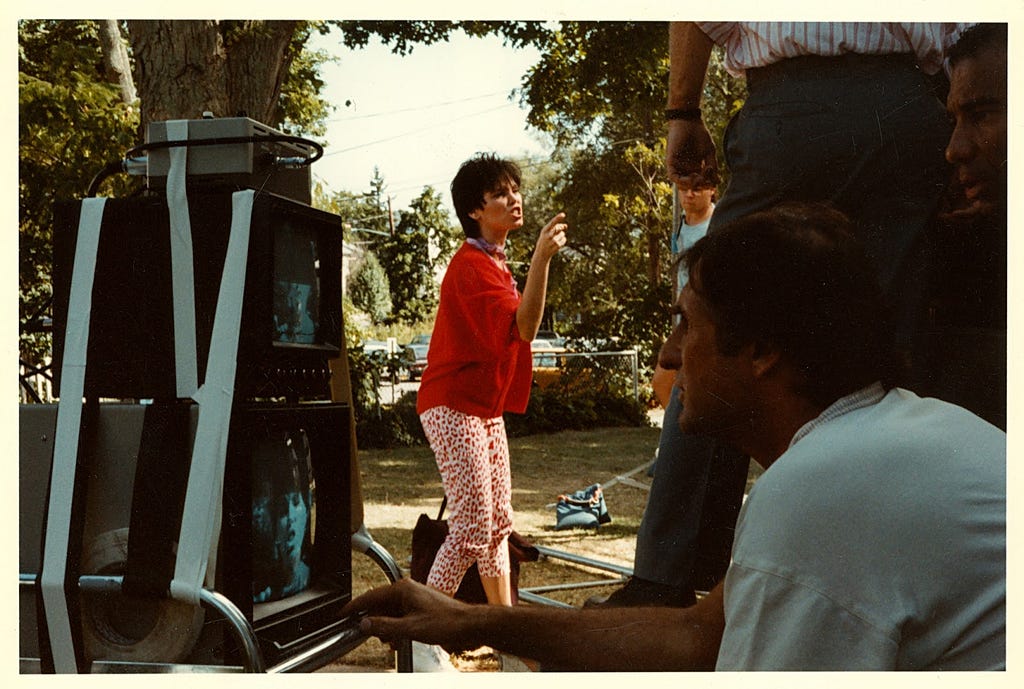
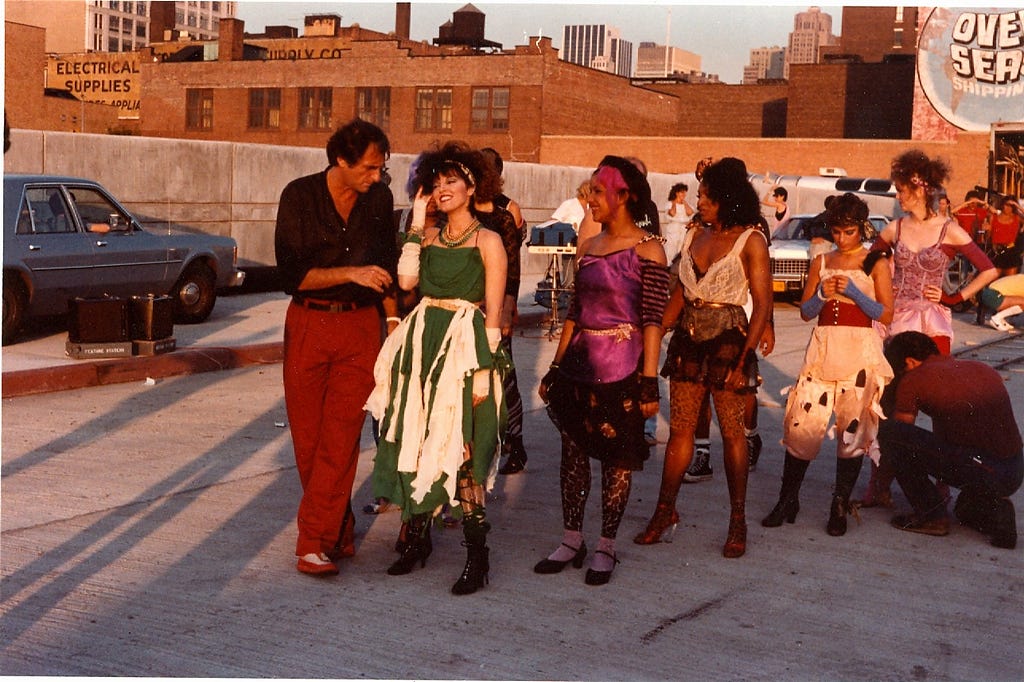
Can you please give us your favorite “Life Lesson Quote”? Can you share how that was relevant to you in your life?
I’m more a practical type of person — but personally, I do relate to three quotes.
The first is, “If you do quality, you’ll do quantity — but it never works the other way around.” The second, from the motion picture, “Hud”; “There’s no way out of life alive.” And the last, from “The Godfather” is “Leave the gun, take the cannoli.” The three of them sort of sum up my life.
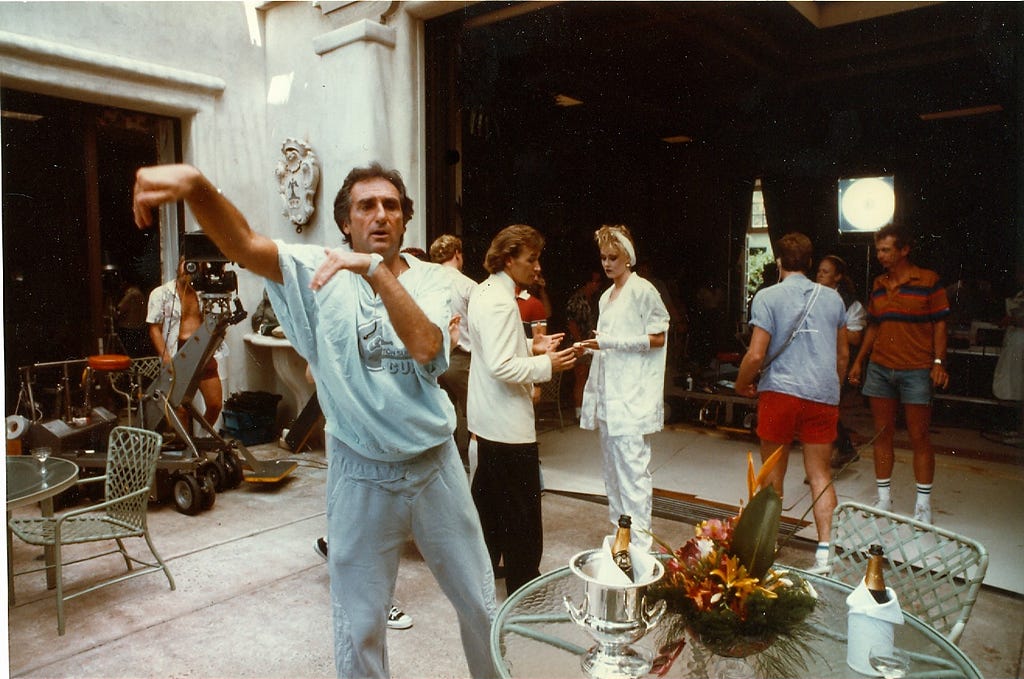
I am very interested in diversity in the entertainment industry. Can you share three reasons with our readers about why you think it’s important to have diversity represented in film and television? How can that potentially affect our culture?
Diversity in ALL forms, in any industry, and especially the entertainment industry — is essential. It’s INTRINSIC TO OUR DAILY LIVES, FUNDAMENTAL AS A FUNCTIONING SOCIETY, and INEVITABLE AS A SOCIAL CONSTRUCT.
I live in a world that makes entertainment and spreads propaganda — films, TV, the internet, and marketing each speaks to all the people — it has the responsibility to reflect all the cultures of today — and, obviously, all the people today are not the same, don’t speak or understand the same language, dress in the same clothes or eat the same food or drive the same vehicles — or, pray to the same God. Point is, it’s not only human, MORAL or inevitable, it’s also essential for progress to be able to relate to and include all people, whether they’re cast, crew, or customers.
What I find hypocritical — yet strangely encouraging…is that in the early years as I was beginning to establish myself as a commercial film director, I would hit a dead end when I recommended we include more black or Hispanic characters in the commercials I was asked to direct — clients refused every single time to consider diversity on the screen — a few might agree perhaps to including one black person as an extra in the background — but most clients would counter with; “no, not yet, no way in our spot!”
Well, time and pressure does change things and that corporate strategy seems to have turned completely around, thankfully.

What are some of the most interesting or exciting projects you are working on now?
At the School of Visual Arts in NYC, I chair the Masters in Film Directing graduate program — and we do a Learning Film each year; a fictional short film adapted and written by professional screenwriters, cast and performed by professional actors and directed by me with a professional crew — the students all play secondary, but necessary roles as the idea is for them to physically and emotionally experience being on a professional film set before they step on theirs to complete their thesis films —
— and, at the same time I’m completing a sequel script to the feature film I spoke of above called “Dinner Rush” — about life, celebrity, murder — and revenge in the world of NY restaurants and star chefs. As I mentioned before, we filmed the original almost exclusively inside my restaurant Gigino Trattoria in Tribeca — where I am enjoying celebrating Gigino’s thirty years in business.
Interesting fact is that over 1000 restaurants opened — and, closed — last year in NY. Ours was not one of them.

Which aspect of your work makes you most proud? Can you explain or give a story?
It’s been rumored that I have made a significant contribution in the formation of “pop culture” as we know it now. Perhaps any influence I might’ve had has affected a small part of that culture, but it’s actually not up to me to decide.
What does give me personal satisfaction regarding my work is when there’s a real emotion felt — real tears or laughter. I’ve obviously stayed away from “car chases” and “blowing up stuff” — I’m way more comfortable with storytelling using human relationships and believable characters — but the real beauty is…reaching someone on an emotional level — nothing like it.
But, perhaps now, the proudest moments of my professional life are when someone I taught, or worked with, or someone who helped me on my set, or in my studio — contacts me, informing of their success or thanking me for guiding them, helping them find a voice, and a purpose on their journey.

Part of being a leader is having to choose between two seemingly good options, making a tough decision when faced with two different paths. Can you share a story about a difficult decision you had to make as a director, filmmaker, or leader?
Bob: “Pack it up!! We’re outta here.” I remember every word. We were shooting a music video with Daryl Hall and John Oates– the song was “Possession Obsession” and we scouted the Fulton Fish Market; an industrial giant under the East River Drive with great character and a funky history, yet it fit my script perfectly. So, on one of the coldest nights of winter, 1984, after making a deal with the fish merchants of a section as smelly, wet and dirty as it can get, we loaded up and arrived with four of our production vehicles, two vans and a few large-body campers– one of the campers held a warm and toasty Hall & Oates– and were met by a barricade of fish trucks– all lined up and blocking any entrance we could access.
TEAMSTERS vs TEAMSTERS. Brothers forever, Teamsters from both unions; the trucks carrying fish to the market lined up the trucks to block our entrance to the Market and opposite stood our Teamsters transporting camera and lighting gear, props, wardrobe– whatever– it was a big shoot and we had a lotta vehicles– all STOPPED!
I was as cold as I have ever been– Patti, then my line producer, confronted a bunch of Teamster toughies reeking of bass, shrimp and squid– “ she squawked; “…what the– we made a deal– we paid already– we’re supposed to shoot tonight.” The meanest of the mean smiled; “Not here, you’re not”– was the instant reply. “You made a deal with the wrong people– we bring the fish to dem guys– it’s our place tonight and you got two choices– pay up or get lost.” It remains one of the few times in our professional history when I remember Patti not getting her way.
A scam, a shake down– we had to pay up a second large location fee in order to get access to the location– but, then…I hesitated and said something stupid to the guys staring me down, and it got a couple burley fish Teamsters to step forward and that got a couple big guys on our side to do the same– and when it looked like things were about to get nasty– I shouted; “Pack it up!! We’re outta here– Follow me– we’re gonna find another location!” “Goodnight , gentlemen.”
I got in my vehicle and led the entire caravan of film trucks, cars, vans and campers carrying about 70 cast and crew out of the Fish Market and we crept north under the East River Drive– and eventually settled on a dank, freezing location close to the water and asked the five homeless guys warming their hands over two flaming barrels if they wanted to be in the video– and told Daryl and John to get in wardrobe; this is the spot we’re shooting tonight– and we shot– and no matter how damn cold it got, there was, among all of us that night, a unified satisfaction that we came, we met with greed, and we retreated. And we kept the dream alive.
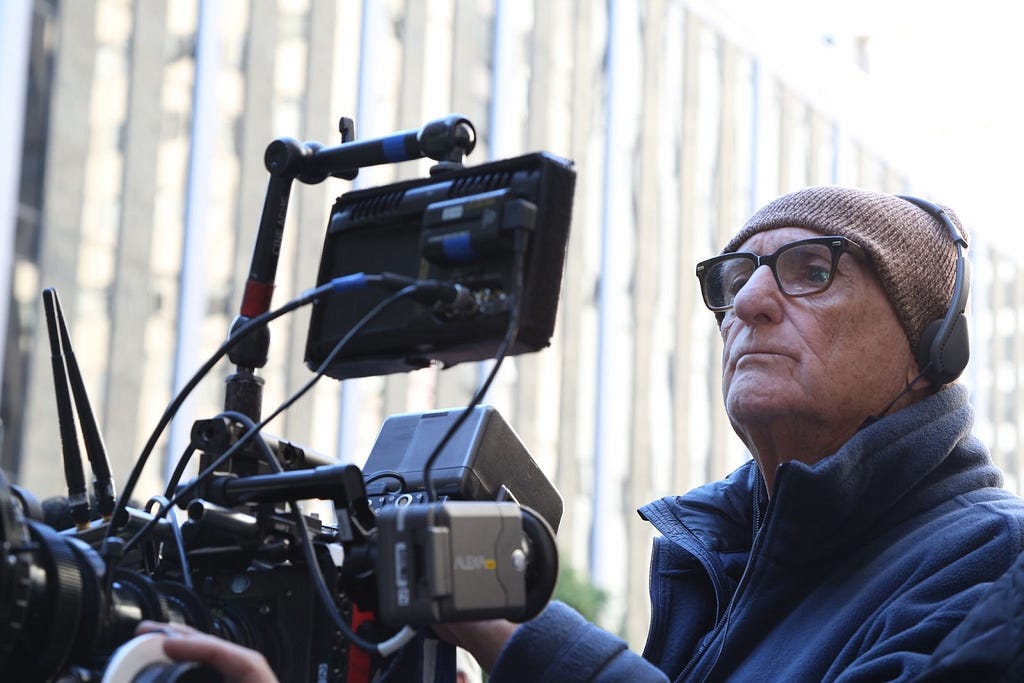
Ok super. Here is the main question of our interview. What are your “5 things I wish someone told me when I first started” and why. Please share a story or example for each.
- One; “Never take yourself too seriously.” Sound advice; I’ve spent the greater part of my life creating make-believe and faux storytelling — who am I to ask anyone to believe anything I say?
- Two; “Don’t ever yell at the actors — “ It’s obvious — the heart and soul of any director’s work — especially work like I usually do — is totally dependent on believable and emotional performances from the actors hired — and the more I make them suffer, the more the chances are I’m the one who ends up really suffering.
- Three; “The sun doesn’t wait for anyone.” Countless times on set, I’ve screamed and stomped that we have “to get the shot before the sun goes down” — but, it didn’t really matter — we always got what we got and the sun never paid much attention to us.
- Four; “The most underrated crew member of all is the sound engineer.” A film can be out of focus and still be tolerated — even enjoyed…but a film will never, ever, satisfy an audience if you can’t hear or understand what’s being said! Trust me on that one.
- Five; “Let McCartney jam without any interruptions!” I made one of my biggest guffaws in Tucson, Arizona one lovely evening — setting up a music video scene where Paul McCartney plays his beloved guitar on stage in a roadside cafe — but, impatient to get it lit dramatically, I demanded that he stop “jamming” with his band members so the crew could communicate with each other — when what I SHOULD HAVE DONE is turn the camera on Paul as he and his mates were into a ‘guitar jam for the ages.’ Not smart.
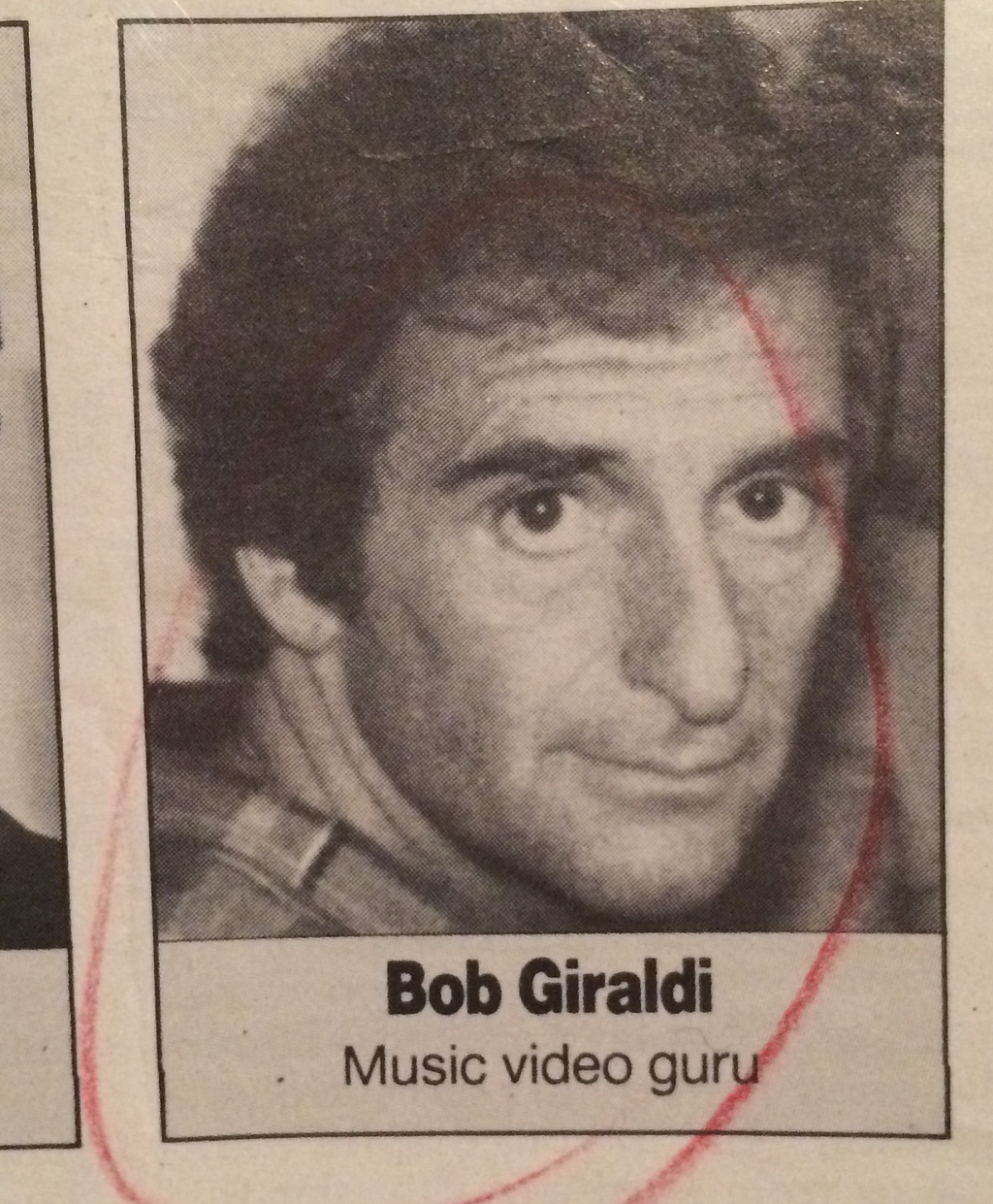
When you create a film, which stakeholders have the greatest impact on the artistic and cinematic choices you make? Is it the viewers, the critics, the financiers, or your own personal artistic vision? Can you share a story with us or give an example about what you mean?
Well, it’s not the critics — I don’t think film critics play as significant a part any longer — they write, they criticize, they defend and then they move on to the next battle.
The production finances, the investors, obviously play a huge part in the final product. No money, no first-rate actors or crew, no amazing locations, not enough days to film, etc, etc — today more than ever, creating entertainment is dependent on finances/contract wages and demands and how to get the most from the money available.
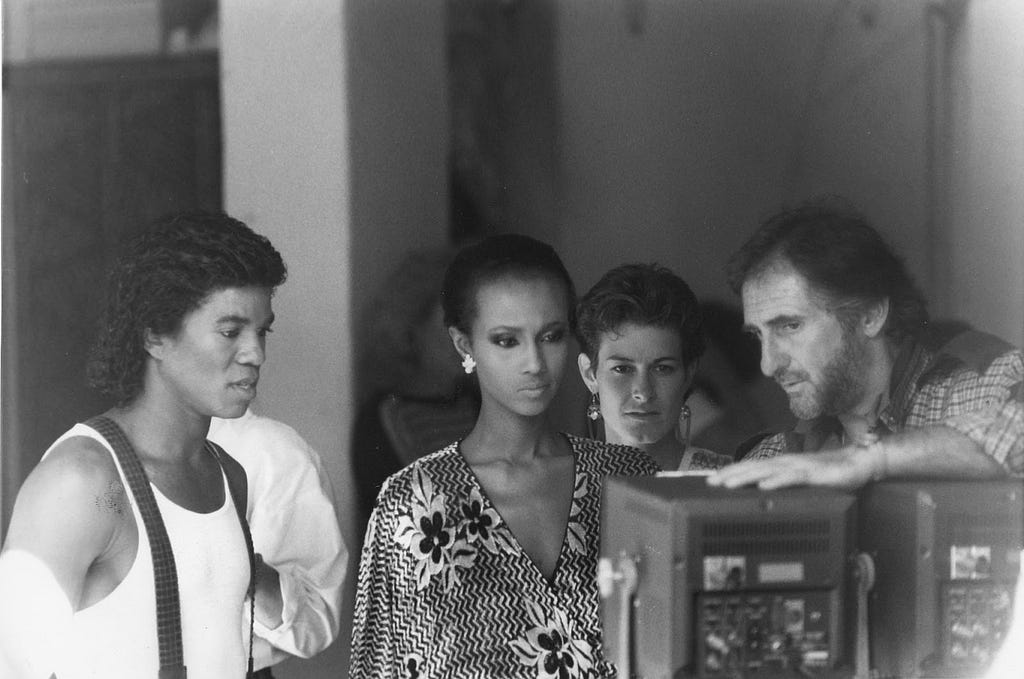
That leaves, more or less, the director, who has not only the vision for storytelling, but just as important, the biggest stake in most filmmaking — whether it’s an independent film, a studio film, episodic tv, a commercial, a student short film, social media, TikTok — it usually comes down, at one point or another, to how to effectively use the finances — or the lack of them.
You are a person of great influence. If you could start a movement that would bring the most amount of good to the most amount of people, what would that be? You never know what your idea can trigger. 🙂
I think I would push, insist, that young people — say in their twenties and thirties — MUST have a place at the table — in all our politics and boardrooms and a voice in the decisions that shape and determine the fate of our citizens…and, the world.
We might be wasting the smartest and most creative ideas, opinions and voices in the room — yes, age and experience are invaluable — but without the pushback and vision — the contested dialogue — from the least represented coalition — we’re always just talking to ourselves.
I would love to support a movement that makes it mandatory to include young voices in all of the country’s most important decisions. It’s their future.
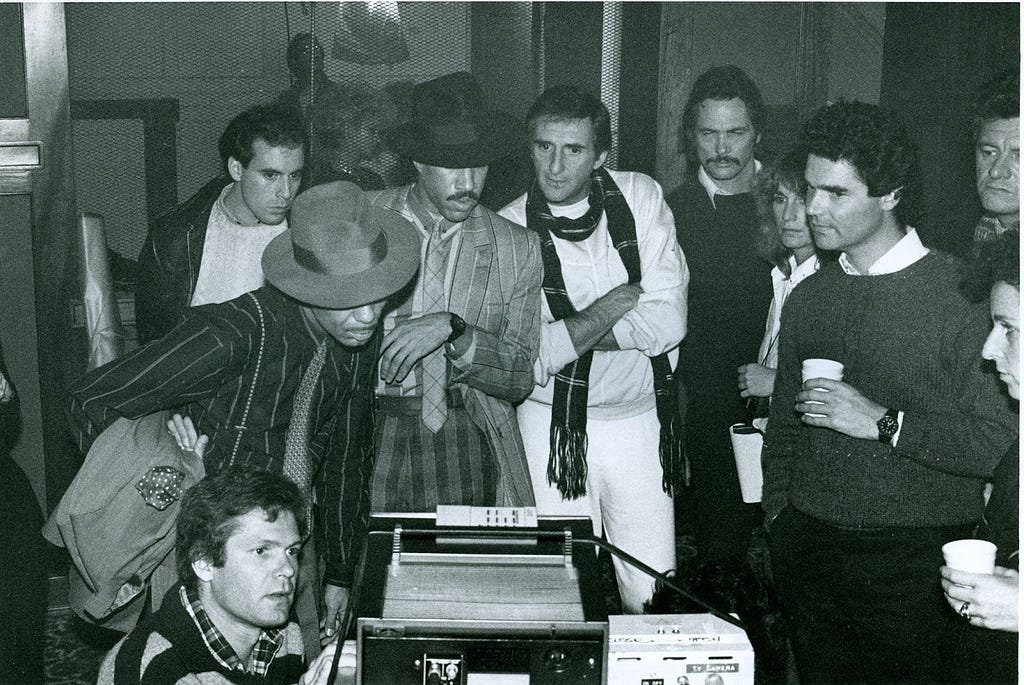
We are very blessed that some of the biggest names in Business, VC funding, Sports, and Entertainment read this column. Is there a person in the world, or in the US whom you would love to have a private breakfast or lunch with, and why? He or she might see this. 🙂
I’d love to have coffee with anyone that might be interested in playing a significant role in financing/helping me set up the sequel to “Dinner Rush” — It’s called “Dinner Rush Too” and it’s the contemporary version of life, labor and love in a trattoria downtown, continuing the saga of a “star chef” who is the prodigal son of the late owner/bookmaker — and including an unusual diverse cast of unique characters who battle in the ‘front and back of the house,” as the restaurant business survives in spite of itself.
How can our readers further follow you online?
Yitzi: Thank you, Bob. I truly appreciate the time you’ve spent sharing these incredible stories and insights. Your wisdom is invaluable. I wish you ongoing success, good health, and nothing but blessings. I’m excited to share your words
Bob: I’m also grateful for your time, the thoughtful questions, and your genuine interest. It’s been a pleasure meeting you as well.
Legendary Film and Television Director Bob Giraldi: “5 Things I Wish Someone Told Me When I First… was originally published in Authority Magazine on Medium, where people are continuing the conversation by highlighting and responding to this story.